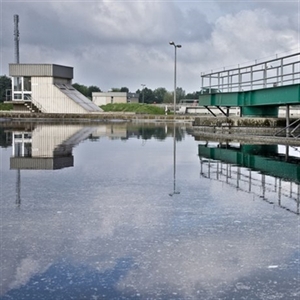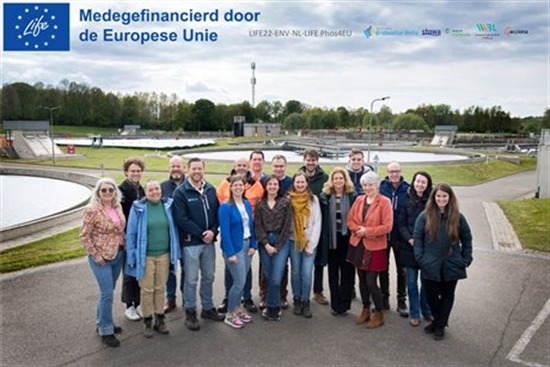Vivianite

Phosphate recovery
In the pursuit of circularity, we are working within the European LIFE project Phos4EU to research the recovery of phosphate from wastewater in the form of vivianite, iron phosphate.
Phosphorus is a resource essential for the growth of plants and animals and as a building block for humans. However, it is becoming increasingly scarce in the world; the end is in sight. Phosphate extraction from ore primarily takes place outside of Europe, and our wastewater contains a lot of phosphates. Therefore, it is a logical step for water authorities to recover phosphate as a resource. The recovered phosphate can then be reused, for example, as fertiliser in agriculture.
Recovery of vivianite from sludge
Since 2019, Limburg Water Board has been actively researching the recovery of vivianite (iron phosphate) from sludge. While struvite (magnesium ammonium phosphate) is generally preferred for phosphate recovery, Limburg Water Board sees opportunities with vivianite. Besides the addition of chloride, which is already used in wastewater treatment, no additional chemicals are needed to recover vivianite from the sludge.
LIFE funding
Together with Water Board Brabantse Delta as the main partner, AquaMinerals, and the Spanish water company Acciona as an international partner, Water Board Limburg is participating in the Phos4EU project, which has been granted funding by the European LIFE programme. In 2025, Water Board Brabantse Delta will put the first large-scale vivianite recovery installation into operation. Thanks to the LIFE funding, Water Board Limburg can now tackle more research questions. For this, a pilot installation with ViviMag technology has been set up at the Hoensbroek wastewater treatment plant (WWTP).

What are we researching?
In the earlier pilot, it was demonstrated that vivianite can be recovered. Now it is important to investigate how we can effectively recover this vivianite. How much can we recover? What is the yield, and can we increase it? Can we bring the recovered vivianite back to the market, and in what form? For example, as a direct fertilizer, for batteries, or as a colourant for cosmetics? AquaMinerals is researching these further applications. It is important that we supply as much material as possible during the pilot. We are investigating two types of sludge for this: non-digested sludge at the Hoensbroek WWTP and digested sludge at the Limmel WWTP. The project will be completed in mid-2028.

Successful Completion of the Pilot Project
In early October 2024, the pilot project conducted at the Hoensbroek WWTP was successfully completed. On October 7, the pilot installation was transported to Helsingborg, Sweden, for inspection and maintenance. Results from the pilot are currently being reported and evaluated within the PHOS4EU Life subsidy consortium and the Wetsus P-recovery consortium.
Throughout the pilot, numerous experiments were conducted. One key finding was the importance of the incoming vivianite concentration in the sludge for the efficiency of the recovery system. This insight provides valuable knowledge about vivianite formation and offers opportunities to improve recovery efficiency. Collaboration with partners such as Kemira, Royal HaskoningDHV, and the Brabantse Delta Water Board has been essential in this context, particularly as they work towards scaling up the technology to a demonstration-scale installation.
Consortium partners will continue analysing the pilot results to explore opportunities for product valorisation. The pilot project yielded two IBC containers (each approximately 1 m³) filled with vivianite slurry. This slurry will undergo further processing using a Dissolved Air Flotation (DAF) system in the coming period. The resulting material will be used to investigate multiple market application options. AquaMinerals is actively researching several processing routes to enhance the circularity and value of the recovered vivianite. Additionally, AquaMinerals is investigating potential applications for the recovered vivianite, such as its use in battery materials or as direct fertilizer. These diverse applications may require varying levels of purity, potentially reducing the need for extensive purification steps.
Want to know more about vivianite recovery?
Our specialists are happy to share more information. Contact
- Saskia Hanneman: [email protected]
- Wout Pannekoek: [email protected]
- Kevin de Waide: [email protected]
